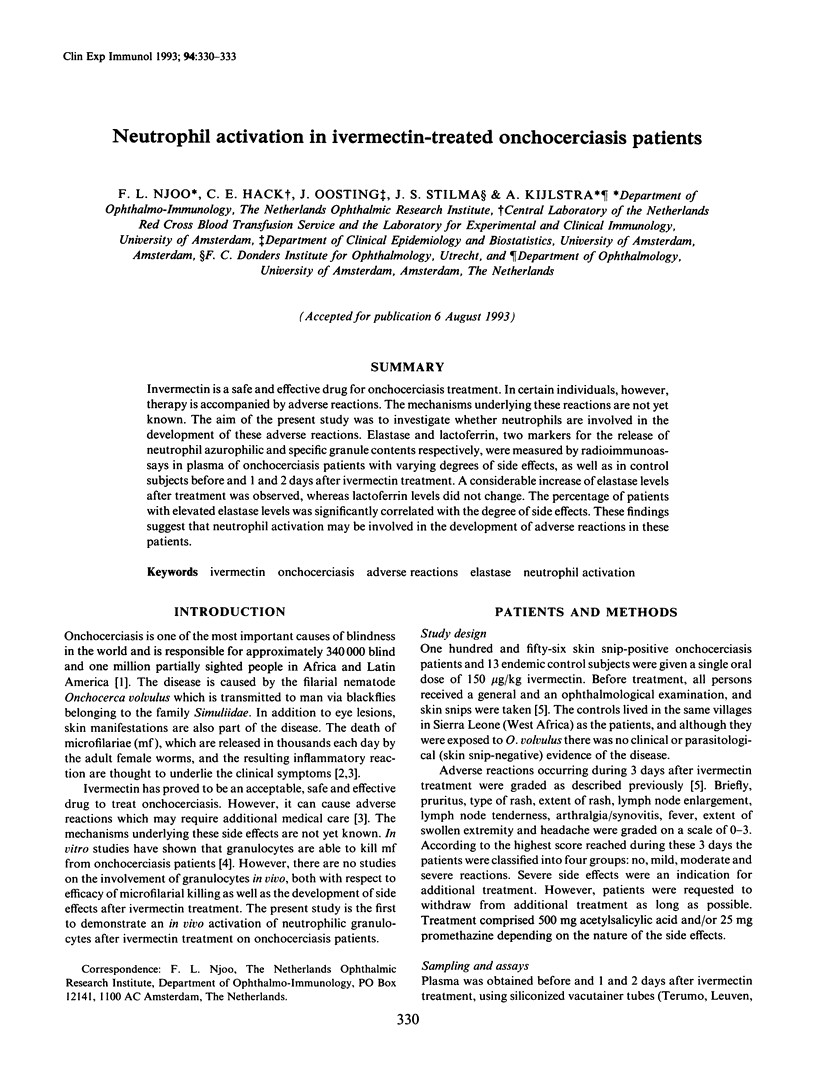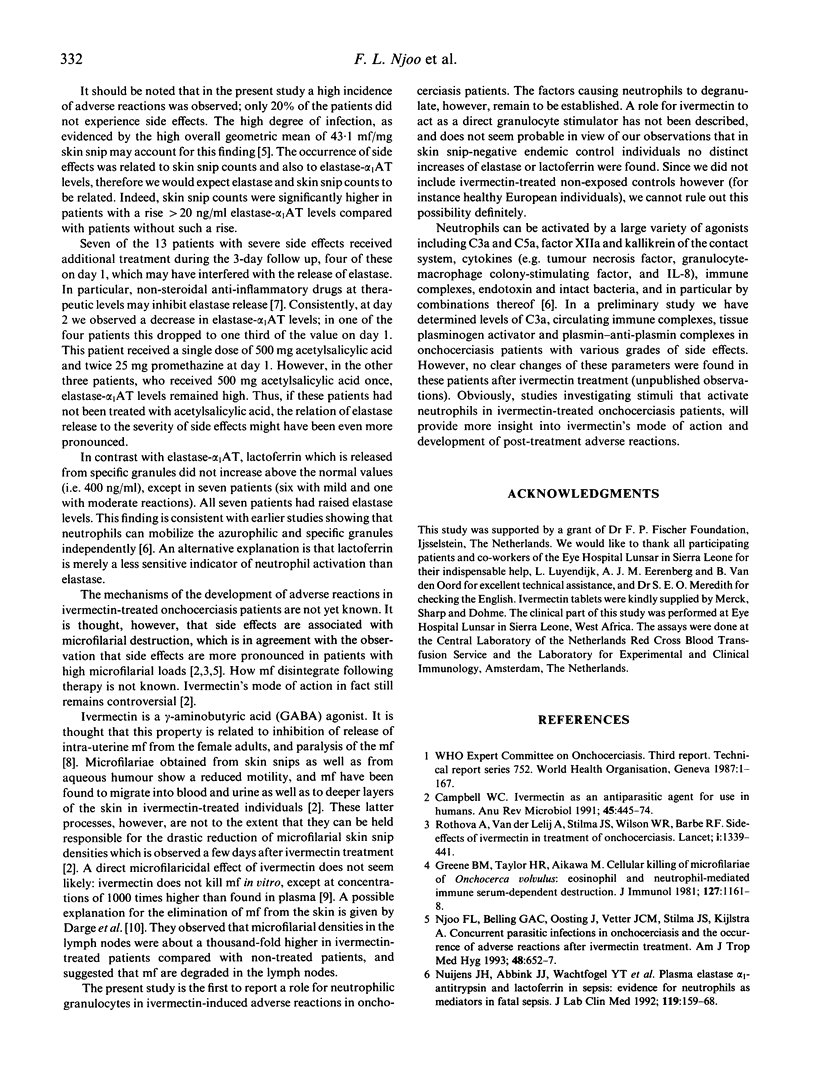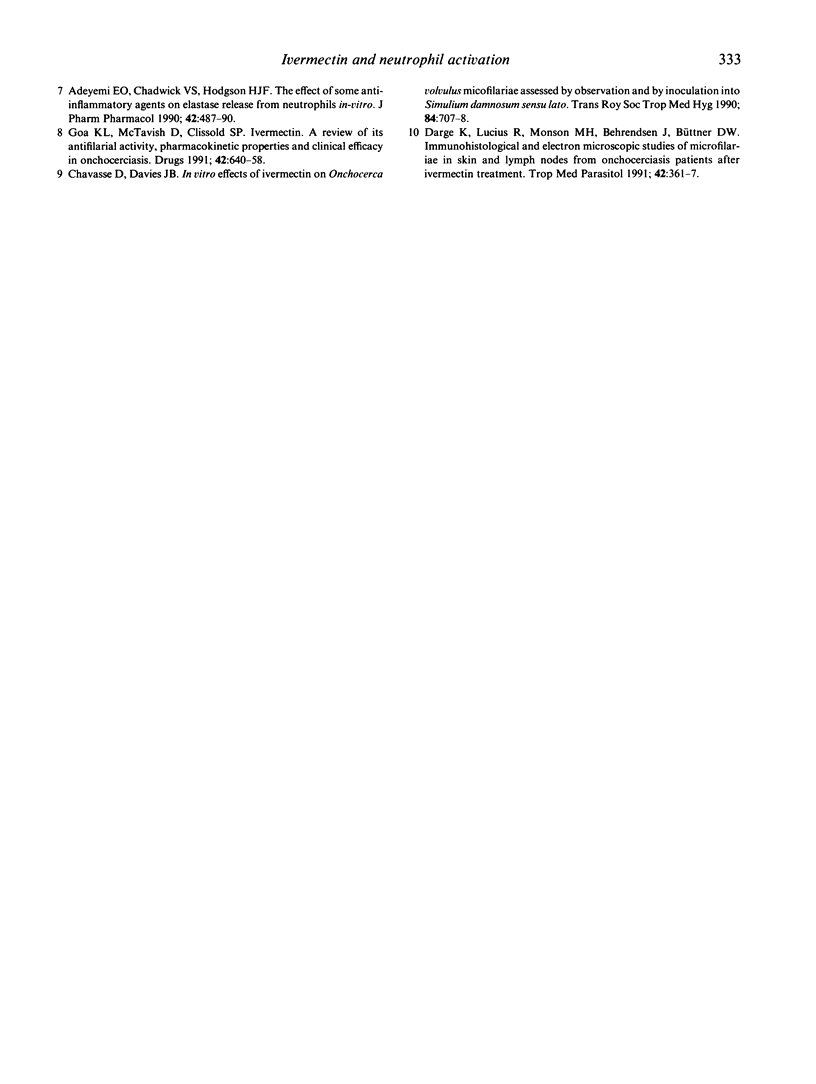Abstract
Ivermectin is a safe and effective drug for onchocerciasis treatment. In certain individuals, however, therapy is accompanied by adverse reactions. The mechanisms underlying these reactions are not yet known. The aim of the present study was to investigate whether neutrophils are involved in the development of these adverse reactions. Elastase and lactoferrin, two markers for the release of neutrophil azurophilic and specific granule contents respectively, were measured by radioimmunoassays in plasma of onchocerciasis patients with varying degrees of side effects, as well as in control subjects before and 1 and 2 days after ivermectin treatment. A considerable increase of elastase levels after treatment was observed, whereas lactoferrin levels did not change. The percentage of patients with elevated elastase levels was significantly correlated with the degree of side effects. These findings suggest that neutrophil activation may be involved in the development of adverse reactions in these patients.
Full text
PDF



Selected References
These references are in PubMed. This may not be the complete list of references from this article.
- Adeyemi E. O., Chadwick V. S., Hodgson H. J. The effect of some anti-inflammatory agents on elastase release from neutrophils in-vitro. J Pharm Pharmacol. 1990 Jul;42(7):487–490. doi: 10.1111/j.2042-7158.1990.tb06601.x. [DOI] [PubMed] [Google Scholar]
- Campbell W. C. Ivermectin as an antiparasitic agent for use in humans. Annu Rev Microbiol. 1991;45:445–474. doi: 10.1146/annurev.mi.45.100191.002305. [DOI] [PubMed] [Google Scholar]
- Chavasse D. C., Davies J. B. In vitro effects of ivermectin on Onchocerca volvulus microfilariae assessed by observation and by inoculation into Simulium damnosum sensu lato. Trans R Soc Trop Med Hyg. 1990 Sep-Oct;84(5):707–708. doi: 10.1016/0035-9203(90)90157-a. [DOI] [PubMed] [Google Scholar]
- Darge K., Lucius R., Monson M. H., Behrendsen J., Büttner D. W. Immunohistological and electron microscopic studies of microfilariae in skin and lymph nodes from onchocerciasis patients after ivermectin treatment. Trop Med Parasitol. 1991 Dec;42(4):361–367. [PubMed] [Google Scholar]
- Goa K. L., McTavish D., Clissold S. P. Ivermectin. A review of its antifilarial activity, pharmacokinetic properties and clinical efficacy in onchocerciasis. Drugs. 1991 Oct;42(4):640–658. doi: 10.2165/00003495-199142040-00007. [DOI] [PubMed] [Google Scholar]
- Njoo F. L., Belling G. A., Oosting J., Vetter J. C., Stilma J. S., Kijlstra A. Concurrent parasitic infections in onchocerciasis and the occurrence of adverse reactions after ivermectin treatment. Am J Trop Med Hyg. 1993 May;48(5):652–657. doi: 10.4269/ajtmh.1993.48.652. [DOI] [PubMed] [Google Scholar]
- Nuijens J. H., Abbink J. J., Wachtfogel Y. T., Colman R. W., Eerenberg A. J., Dors D., Kamp A. J., Strack van Schijndel R. J., Thijs L. G., Hack C. E. Plasma elastase alpha 1-antitrypsin and lactoferrin in sepsis: evidence for neutrophils as mediators in fatal sepsis. J Lab Clin Med. 1992 Feb;119(2):159–168. [PubMed] [Google Scholar]


